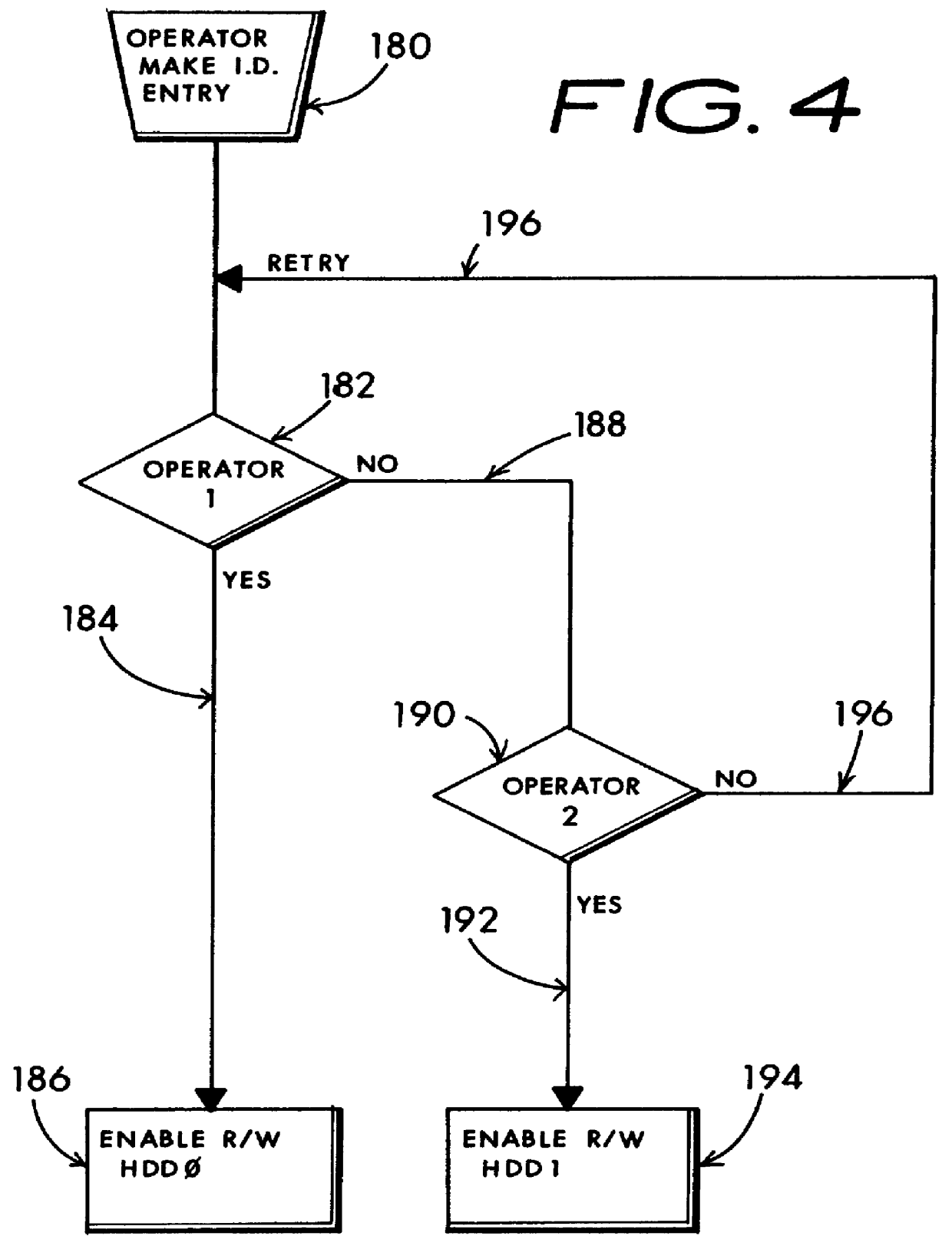In particular the widely different software characteristics sometimes introduced by two different users can and often do cause catastrophic interaction between shared software elements of the computer.
A student using a computer shared with someone else is also a
threat to the other user's program and file contents.
Due to the nature of
programming, an inexperienced
programmer can introduce
byte level errors into hard disk files while attempting to use the I / O instructions for the
programming language.
For example, in commonplace GW-BASIC the PEEK and POKE instructions, together with file access OPEN, PRINT and WRITE instructions can cause potential havoc with files on a hard disk if used carelessly or without knowledge of the ramifications of their use.
Said another way, installation of a new program by a first user class may trash programs run by a second user class.
This kind of accidental file damage ordinarily occurs because both use classes commonly depend upon the same underlying DOS
operating system and Windows shell environment for their individual software operating support.
Installation of game software which generally takes place more frequently than professional level or offices-class
application software, can lead to random and unexpected corruption of operating system and application program files as well as accidental overwriting of, or more subtle
byte level damage to, office data files.
As a result, system crashes occur, sometimes with devastating effect on home office or
business data due to corruption caused either by the
crash itself or more often by an attempt by an inexperienced game user to recover from the
crash.
Loss of data when the information stored by the data includes
client files, sales leads,
technical information or a variety of other unique data can introduce substantial economic loss to a small business, as typified by a home office environment.
Sometimes the information is impossible to reconstruct after a loss caused by hard disk corruption.
At the very least, the information is likely to be very laborious and
time consuming to re-enter.
It is possible that this unexpected loss of critical information can actually push a small business over-the-edge into financial insolvency or bankruptcy.
A computer's cost is substantial if it affords state-of-art performance levels demanded by most better contemporary software.
The result of these aforesaid hardware requirements, when to two separate computer systems, can result in considerable overkill in the sense of hardware investment.
This is to say that what is eliminated is the likelihood for a computer
crash wherein the cause may be traced to accidental corruption of the computer's
mass memory storage device, commonly implemented as a hard disk drive.
Computers which share the same hard disk drive between two or more disparate and non-concurrent users are especially vulnerable to unexpected crashes, loss of data and operational error.
This comes about mostly due to the "other" user's installation of new or additional software, inexperience in using
system level utility programs and plain ordinary operator errors.
Sometimes an occurrence of malicious file violation by another user is the cause for
data loss or program crash.
Of course a computer system crash may come about from a variety of other causes.
When a computer crashes, a software defect is most often the culprit.
In one form, the software defect might be intrinsic in the applications program, or it might involve a
random error produced in the computer's hardware (such as a defective memory bit location) or through
user error.
More problematic is the introduction of file or program errors in the
mass memory storage through mistake or tampering by another system sharing user.
This later type of cross-user introduced file corruption might be caused through installation of new software by another user, or through the other users ignorance in using
system level program commands.
A
virus may also be inadvertently introduced into a system by one user which may destroy the efforts of another user.
While anti-virus software can serve to reduce the liklihood for this sort of damage, the
vulnerability of one user to another user's installation of contaminated software remains as a real and potentially catastrophic problem associated with system sharing.
Reality is such that such duplicity of resources is extraordinarily wasteful of resources and more to the point unnecessarily costly.
Unfortunately, no matter how well intentioned such partitioning is, it does not truly isolate the users catastrophic
data loss.
Sometimes this corruption might come about because one user or the other inadvertently or intentionally runs a utility function such as FORMAT and simply causes a reformat of the hard disk to occur which inevitably results in massive and irreversible hard disk
data loss.
No action by the other non-intended user can access the unique hard disk drive and as a result, even massive errors such as a disk re-format can not occur on another user's operationally set-aside hard disk drive through the dumb or intentional efforts of the immediate user.
 Login to View More
Login to View More  Login to View More
Login to View More 


